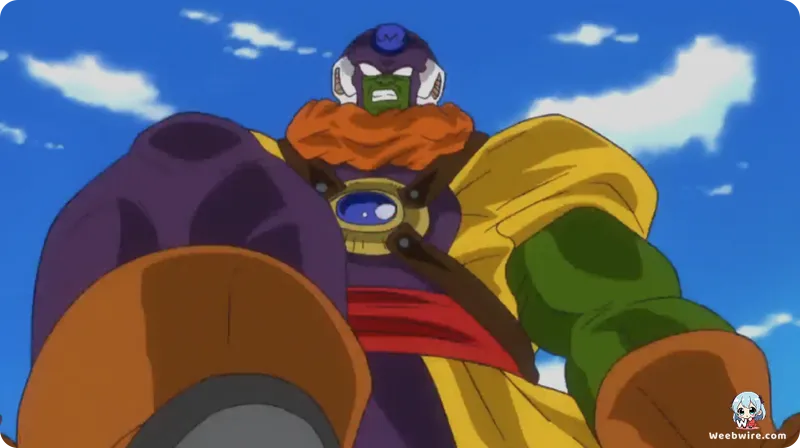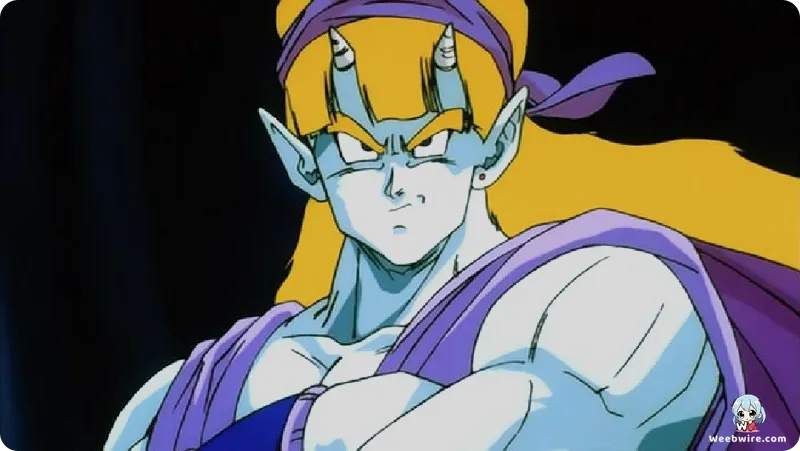Unveiling the Legacy: How 'Dragon Ball Z: Lord Slug' Forged a Path with the Iconic 'False Super Saiyan'

Released in March 1991, Dragon Ball Z: Lord Slug carved out a distinct and often-debated niche within the expansive saga of Dragon Ball Z cinematic ventures. While many DBZ films are celebrated for their explosive action and introduction of formidable villains, Lord Slug stands out for a singular, groundbreaking, albeit non-canonical, power-up that indelibly marked the minds of fans: the "False Super Saiyan" transformation. This astonishing state, showcasing Goku enveloped in a golden aura with spiky hair, emerged compellingly before the true Super Saiyan form was fully unveiled in the main anime and manga. It ignited intense fan speculation and served as a tantalizing glimpse into Goku's rapidly escalating power, forever altering expectations.
The Enigma of the False Super Saiyan
At the time of its debut, the Frieza Saga was still unfolding in the Dragon Ball Z anime, with the legendary Super Saiyan transformation remaining a concept shrouded in mystery, merely hinted at. Toei Animation, the creative force behind the movie adaptations, frequently exercised creative liberties, crafting standalone narratives that explored new adversaries and power thresholds. Lord Slug perfectly exemplifies this bold approach. Goku's "False Super Saiyan" form, also known as "Giji Super Saiyan," depicted a raw, untamed surge of power. His eyes retained their normal appearance, diverging from the iconic green associated with a true Super Saiyan, and his hair didn't fully achieve the golden hue. Nevertheless, the sheer intensity of his golden aura and heightened aggression were unmistakably present. This early rendition of a Saiyan power-up offered audiences a thrilling preview of what lay ahead, building feverish anticipation for the eventual, full-fledged transformation against Frieza. It stands as a prime illustration of how the films, despite often being non-canon, could experiment with concepts and visual themes that resonated profoundly with the dedicated fanbase.
Lord Slug: A Malevolent Namekian Threat
Beyond Goku's proto-Super Saiyan state, the film's titular antagonist, Lord Slug, is a character steeped in intriguing lore. Slug is introduced as a Namekian, yet starkly contrasts the benevolent Piccolo or the wise Guru. Instead, he embodies a rare, malevolent lineage of his race, banished from Planet Namek due to his inherent wickedness. What renders Slug particularly noteworthy is his designation as a "Super Namekian." This concept notably predates the later revelation of Piccolo's "Super Namekian" fusions with Nail or Kami in the main series, presenting an early, darker interpretation of enhanced Namekian capabilities. Slug's immense power, his terrifying ability to grow to colossal proportions, and his formidable telepathic prowess set him apart. His chilling ambition to terraform Earth into a new Planet Slug, systematically draining its life force with a devastating "planetary freezer," echoes classic sci-fi tropes and establishes a truly compelling threat.

Furthermore, Lord Slug's character design and motivations bear a striking resemblance to King Piccolo (Piccolo Daimao), one of the earliest and most formidable villains from the original Dragon Ball series. Both are ancient, malevolent Namekians who relentlessly seek eternal youth through the Dragon Balls and aim to subjugate Earth, plunging it into an era of darkness. This deliberate parallel likely served as a nostalgic homage to long-time fans, reintroducing a similar archetype with a fresh, cinematic twist. The shared lineage of these villains underscores the cyclical nature of evil within the Dragon Ball universe and highlights Akira Toriyama's masterful genius in crafting compelling adversaries. While Toriyama himself primarily focused on the manga, providing character designs and overarching concepts, the movie scripts were largely developed by Toei Animation, allowing them to explore these thematic echoes and expand upon the Dragon Ball mythos in unique ways.
Unforgettable Character Contributions
The film also delivers memorable moments for other beloved characters. Piccolo, ever the stoic protector, plays a pivotal role in aiding Goku. In a selfless act, he donates a portion of his vital life force to Goku, enabling the Saiyan to regain his strength and push past his limits. This act of unwavering camaraderie further solidifies Piccolo's redemption arc, showcasing his steadfast commitment to defending Earth, even alongside his former rival. Gohan, too, commands the spotlight. His unique Namekian-like hearing, a trait inherited from his profound bond with Piccolo, allows him to detect and skillfully counter Lord Slug's devastating sonic attack a critical weakness that proves instrumental in the final confrontation. Gohan's innocent yet powerful contribution adds a layer of charm and strategic depth to the battle, reinforcing his latent potential that would later blossom in future sagas.
Dragon Ball Z: Lord Slug transcends being merely another action-packed film; it stands as a significant piece of Dragon Ball Z history, reflecting the creative experimentation and burgeoning popularity of the franchise in the early 1990s. Its pioneering introduction of the "False Super Saiyan" remains a point of enduring fascination, a captivating 'what if' scenario that predated canonical revelations, showcasing Toei's remarkable ability to anticipate and interpret the escalating power levels of the Saiyans. The movie's masterful blend of classic villain archetypes, unique Namekian lore, and pivotal character contributions firmly secures its place as a significant, albeit non-canon, chapter in the Dragon Ball Z saga, offering fans a deeper immersion into the universe's expansive possibilities and the enduring appeal of its iconic heroes and villains. It stands as a powerful testament to the boundless creativity that defined the golden age of Dragon Ball Z.
Credits
Dragon Ball Z: Lord Slug
Author
Akira Toriyama
Cover Art
Minoru Maeda
Studio
Toei Animation
Publisher
Shueisha
Producers





